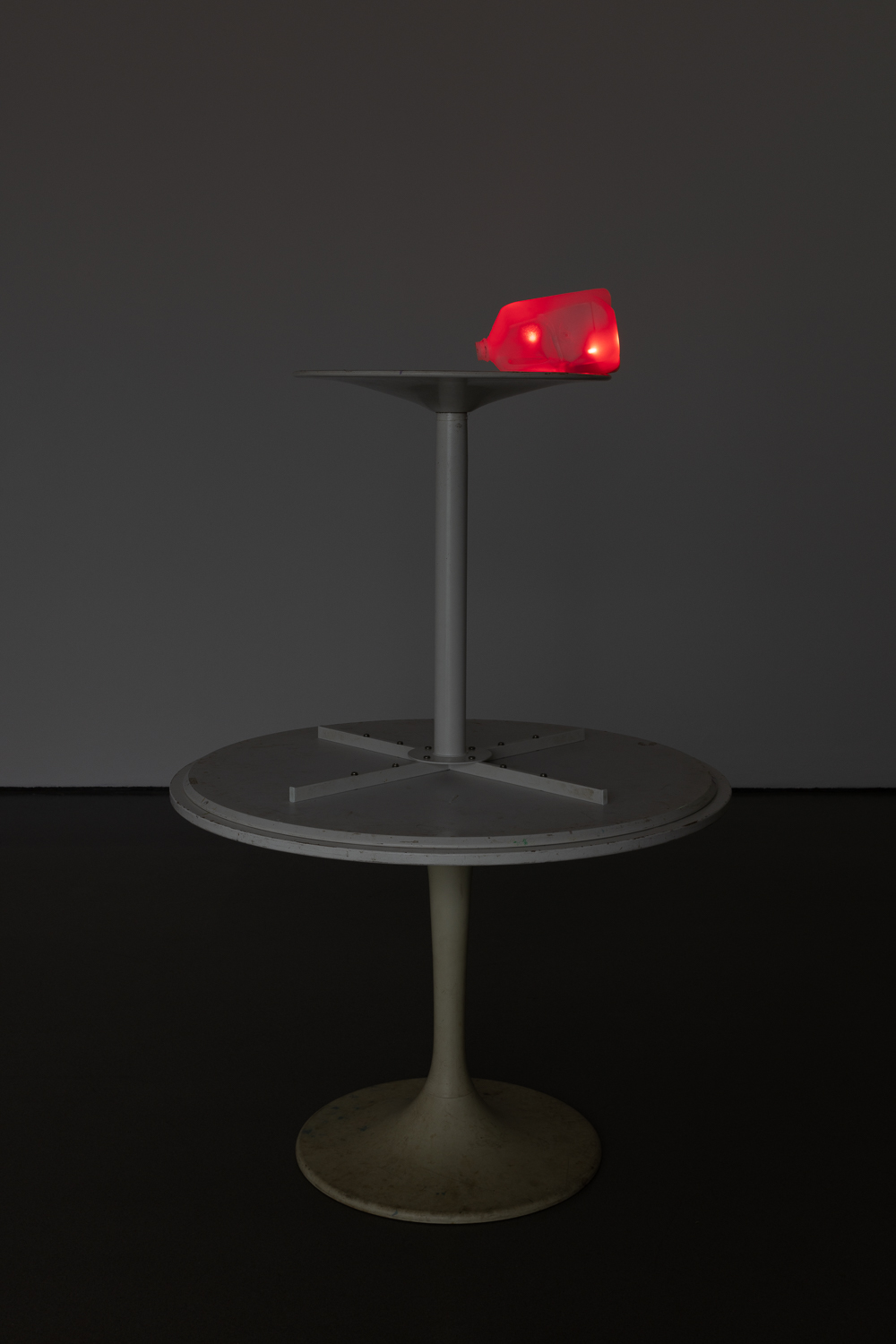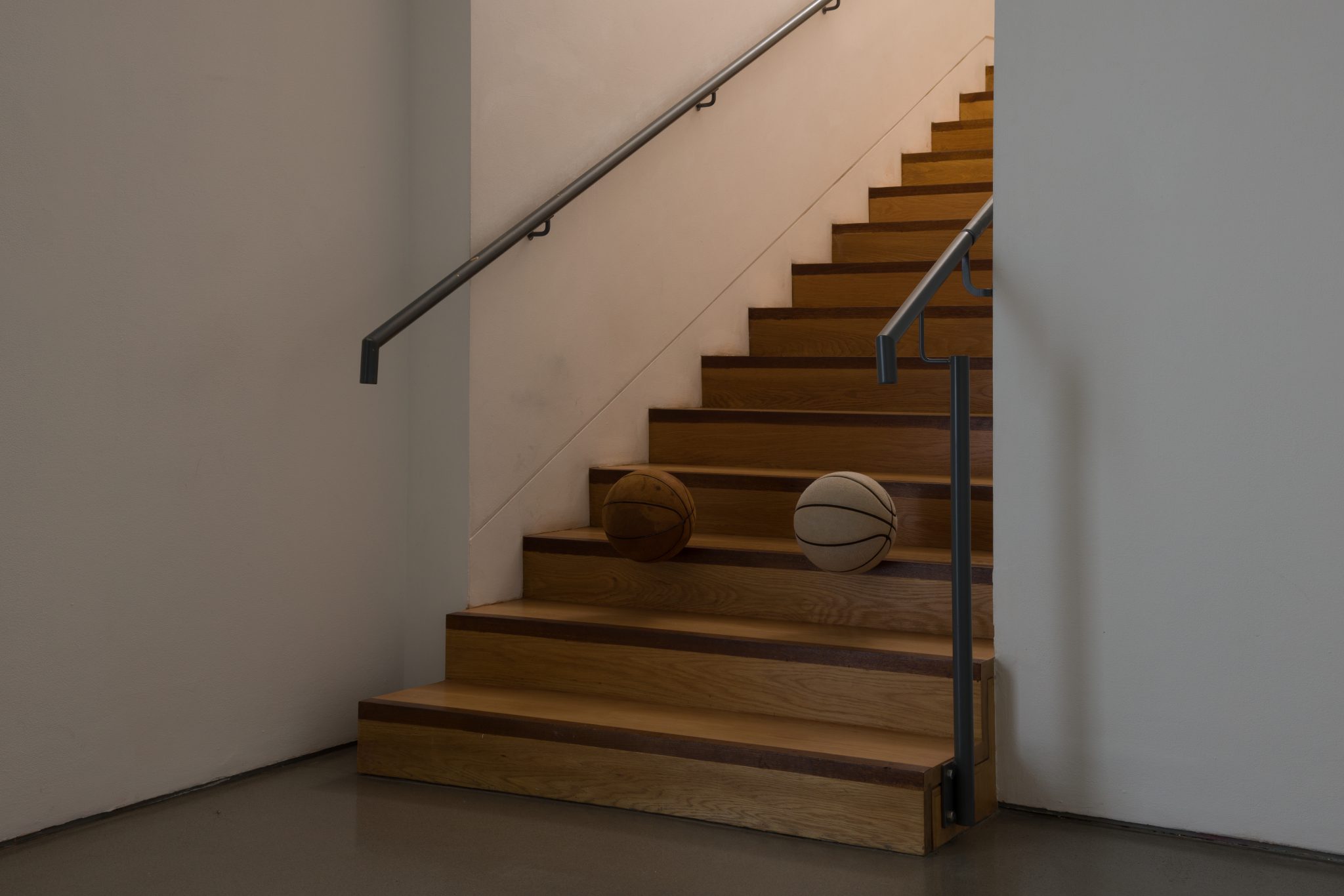The American artist’s simple, seemingly half-installed sculptural interventions at Henry Moore Institute, Leeds are haunted by a spectral sense of absence
Considering the waves of industrial strike-action that have swept the UK during early 2023, it seems only a matter of time before gallery technicians down tools and join the picket line. Or so you might think when entering Michael E. Smith’s solo show, which appears to have been left half-installed: the lights are switched off, window shutters are closed, the doors of a service lift have been left open and the space looks virtually empty, save for a modest smattering of sculptural collages made from simple reconfigurations of dilapidated furniture, obsolete tech and other discarded objects ostensibly salvaged from skips or found on roadsides. This stringent economy of means is standard fare for Smith, whose slight and understated works are typically improvised in situ, responding to the architectural specificities of the gallery, which itself becomes an integral sculptural ingredient via the American artist’s simple yet strangely disquieting interventions.
In the gloom of the first room, a grubby flatscreen television lies facedown on the floor, where it is accompanied by a large flat pebble, its puddlelike shape suggestive of an unpleasant liquid oozing from the screen. Nearby, continuing the mood of entropy and decay, a manky teal armchair is transformed by the macabre addition of a diorama featuring a cluster of five standing taxidermied ducks stuck to the reverse of its backrest. In the next, airier, double-height gallery, a first-aid cabinet high above our heads is deployed to pin a shaggy animal pelt to the wall. The rest of the large space is left bare apart from the rectangular forms of a VHS recorder and DVD player, wall-mounted side by side in the show’s only titled work – BUGS (all works 2023) – perhaps a comment on technological obsolescence; or maybe a nod to covert surveillance, or a wry allusion to the aseptic language of Minimalism. In Smith’s speculative world of free-associative thinking, where all such readings are valid and encouraged, these austere black shapes might even be a sinister pair of eyes staring at us ominously.

Although Smith has developed an idiosyncratic approach to sculpture-making, art-historical reference points remain conspicuous – assemblage, conceptualism, Post-minimalism, institutional critique, even Surrealism – with some works seeming to be in dialogue with specific artists. It’s hard, for instance, not to think of Jeff Koons’s Two Ball Total Equilibrium Tank (1985) when looking at Smith’s untitled pair of basketballs, which appear to float together on a staircase. If Koons’s pristine specimens allude to the dream of achieving fame and fortune through sport – unattainable for all but an elite few – Smith’s humble, well-worn objects offer an antithesis, suffused with a sense of pathos and loss rather than aspiration.

In the final room is a sculpture comprising two circular kitchen tables, one upturned on top of the other and crowned with a plastic milk bottle filled with red LEDs that glow like embers in the darkened space. Like all the works in this show, it exudes an uncanny domesticity, its constituent parts appearing as relics charged with a history of human use and touch, but also imbued by something less tangible that verges on the talismanic or ritualistic. This tension, between the mundane and the fantastical, is where Smith’s works find their potency.
The omission of wall texts and exhibition labels, along with the sparseness of Smith’s installation, invites a consideration of what might have been removed as much as it does that which remains. Outside the galleries, an easily missed videowork installed behind the reception desk initially appears to be a CCTV feed from the museum’s stores. In fact, the grainy, looped footage shows a room in a boarding kennel, in which a resting canine rises briefly from its blankets before bedding down again, perpetually waiting for the return of its master. As with Smith’s off-kilter assemblages and environmental tweaks – all of which operate on a distinctly human scale – it is similarly haunted by the spectre of bodily absence.
Michael E. Smith at Henry Moore Institute, Leeds through 18 June
